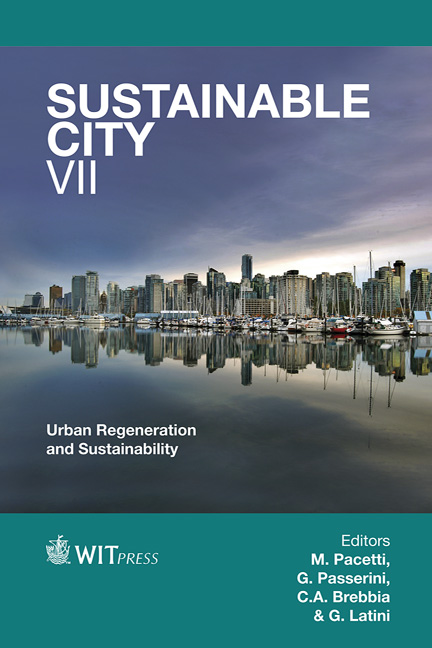Principles For Place Identity Enhancement: A Sustainable Challenge For Changes To The Contemporary City
Price
Free (open access)
Transaction
Volume
155
Pages
12
Page Range
993 - 1004
Published
2012
Size
1,366 kb
Paper DOI
10.2495/SC120832
Copyright
WIT Press
Author(s)
M. Sepe
Abstract
Globalization and technological development have contributed to accelerated rates of change and transformed spaces in the contemporary urban landscape. The end result is that on the one hand cities, places, itineraries, customs and behavioural patterns have all come to resemble one another, contributing to an increasing urban identity crisis. On the other, the hallmark of most contemporary cities is now simultaneity and fragmentation. The difficulty of decodifying the new urban scene in order for the city to be planned sustainably led to the PlaceMaker method being set up. This is a method of urban analysis and design which both detects elements that do not feature in traditional mapping and which constitute the contemporary identity of the places, and identifies appropriate project interventions. Starting from these premises, the aim of this paper is to show the PlaceMaker method and the summary of the main experiments which were carried out. The paper concludes with proposal of the \“12 principles for place identity enhancement”, designed as checklists for urban projects with place identity at the core. Keywords: place identity, urban design, contemporary city, sustainable principles, PlaceMaker. 1 Introduction The complexity of urban dynamics which are interesting the contemporary city is mainly due to the speeding up of time and changes in the modality of use of urban space. The resulting instability gives rise to situations of transience and transformation, fertile ground for territorial marketing operations characterized
Keywords
place identity, urban design, contemporary city, sustainable principles, PlaceMaker.





